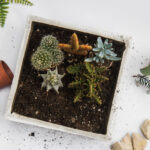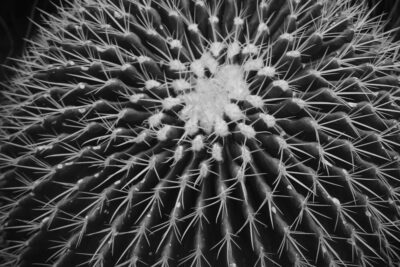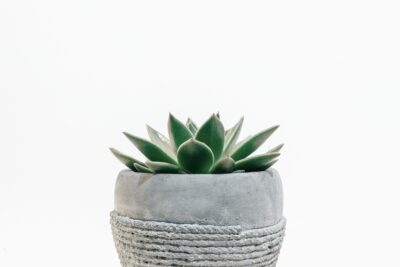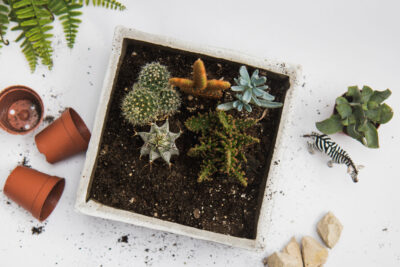
Choosing Low-Maintenance Outdoor Perennial Succulents

When it comes to creating a beautiful and vibrant outdoor space, many gardeners are turning to low-maintenance perennial succulents. Succulents are known for their unique ability to store water in their leaves and stems, making them incredibly resilient and easy to care for. These plants come in a wide variety of shapes, sizes, and colors, making them a versatile choice for any garden or landscape.
We will explore the world of low-maintenance outdoor perennial succulents and provide helpful tips for choosing the right ones for your garden. We will discuss the benefits of growing succulents, including their ability to withstand drought and thrive in various climates. Additionally, we will provide guidance on selecting the best succulents for different growing conditions, such as full sun or partial shade. Whether you are a seasoned gardener looking to expand your collection or a beginner eager to start your first succulent garden, this article will provide you with the information you need to create a stunning and low-maintenance outdoor space.
- Consider planting succulents that are native to your region for easy maintenance
- Look for succulents with thick leaves, as they can store more water and require less frequent watering
- Opt for succulents that have a compact growth habit, as they will require less pruning and shaping
- Choose succulents that are cold-hardy if you live in a colder climate, as they will require less protection during winter
- Plant succulents in well-draining soil to prevent root rot and ensure they receive the right amount of moisture
- Provide succulents with ample sunlight, as they thrive in bright, sunny conditions
- Avoid overwatering your succulents, as this can lead to root rot and other issues
- Consider using mulch or rocks around your succulents to help retain moisture and keep weeds at bay
- Regularly check your succulents for pests or diseases and take appropriate action if needed
- Take advantage of the low-maintenance nature of succulents by grouping them together in a container or rock garden for a stunning display
- Frequently Asked Questions
Consider planting succulents that are native to your region for easy maintenance
When it comes to creating a low-maintenance outdoor garden, choosing the right plants is key. One of the best options to consider is planting succulents that are native to your region. Native succulents are well-adapted to the local climate and soil conditions, making them easier to care for and more likely to thrive in your garden.
Native succulents have already adapted to the specific weather patterns, rainfall levels, and temperature fluctuations of your area. This means they require less water and are generally more resilient to pests and diseases. By choosing native succulents, you'll be setting yourself up for success and minimizing the amount of effort needed to maintain your outdoor garden.
Benefits of low-maintenance outdoor perennial succulents:
- Drought-tolerant: Succulents are known for their ability to store water in their leaves, stems, or roots. This adaptation allows them to withstand long periods without water, making them an ideal choice for low-maintenance gardening.
- Minimal watering: Unlike many other plants, succulents only need to be watered sparingly. Their water storage abilities mean they can survive on infrequent watering, reducing the time and effort you need to spend on watering your garden.
- Resilient to various conditions: Succulents are known for their ability to tolerate a wide range of conditions, including extreme temperatures, poor soil quality, and even neglect. This resilience makes them a great choice for those who want a thriving garden without constant attention.
- Low maintenance: Once established, succulents require minimal care. They don't need regular pruning, deadheading, or fertilizing like many other plants. This makes them an excellent option for busy individuals or those who simply prefer a hands-off approach to gardening.
Overall, choosing low-maintenance outdoor perennial succulents, especially those that are native to your region, is a wise decision for creating an effortless and thriving garden. Their adaptability, water-saving capabilities, and minimal care requirements make them a perfect choice for both beginners and experienced gardeners alike.
Look for succulents with thick leaves, as they can store more water and require less frequent watering
 Is Lack of Sunlight Killing My Succulent?
Is Lack of Sunlight Killing My Succulent?When it comes to choosing low-maintenance outdoor perennial succulents, one important factor to consider is the thickness of their leaves. Succulents with thick leaves have the ability to store more water, which means they require less frequent watering compared to those with thin leaves.
Thick-leaved succulents have adapted to survive in arid environments by storing water in their leaves, stems, or roots. This adaptation allows them to withstand long periods of drought, making them an excellent choice for those looking to have a low-maintenance outdoor garden.
By selecting succulents with thick leaves, you can reduce the amount of time and effort needed to water your plants. These plants have the capacity to retain water for longer periods, reducing the risk of dehydration and the need for constant watering.
Some examples of succulents with thick leaves include Aloe vera, Echeveria, Haworthia, and Sedum. These plants not only require less watering but also have unique and attractive foliage, adding visual interest to your outdoor space.
Remember to provide well-draining soil for your succulents as they are prone to root rot if left in soggy conditions. The combination of thick leaves and well-draining soil creates an ideal environment for low-maintenance outdoor perennial succulents.
Opt for succulents that have a compact growth habit, as they will require less pruning and shaping
When it comes to choosing outdoor perennial succulents, opting for varieties that have a compact growth habit can save you a lot of time and effort in terms of pruning and shaping. These types of succulents naturally have a more restrained and tidy growth pattern, requiring less maintenance to keep them looking their best.
By selecting compact succulents, you can enjoy a low-maintenance outdoor garden that requires minimal pruning. These plants typically have shorter stems and a more clumping growth habit, which means they won't sprawl or spread out as much as other varieties. This makes them perfect for those who prefer a neat and well-organized garden aesthetic.
 Optimal Outdoor Climate for Succulents: Temperature Range Tips
Optimal Outdoor Climate for Succulents: Temperature Range TipsFurthermore, compact succulents often have naturally dense foliage, which helps to create a lush and full appearance without the need for frequent pruning or shaping. Their foliage tends to grow closer together, forming a dense mat or rosette-like structure that adds visual interest to your outdoor space.
When choosing compact succulents, look for varieties such as Echeveria, Haworthia, and Sedum. These succulents are known for their compact growth habits and are popular choices for low-maintenance outdoor gardens.
Another advantage of opting for compact succulents is that they are generally more resistant to pests and diseases. Their dense foliage and compact form make it harder for pests to penetrate and infest the plants. This means you can spend less time dealing with pest control and more time enjoying your outdoor garden.
In addition to their low-maintenance nature, compact succulents also come in a wide range of colors, shapes, and textures. Whether you prefer vibrant hues or muted tones, there is a compact succulent variety that will suit your preferences. From spiky rosettes to trailing vines, you can find a compact succulent that fits perfectly into your outdoor garden design.
Opting for succulents with a compact growth habit is a wise choice for those seeking low-maintenance outdoor perennial plants. These succulents require less pruning and shaping, have a natural resistance to pests, and offer a variety of colors and textures to enhance your garden. So, go ahead and start incorporating these compact succulents into your outdoor space for a beautiful and hassle-free garden.
Choose succulents that are cold-hardy if you live in a colder climate, as they will require less protection during winter
When selecting outdoor perennial succulents for your garden, it's important to consider the climate in which you live. If you reside in a colder region, it's wise to choose succulents that are cold-hardy. These varieties are more resilient and can tolerate freezing temperatures without much damage. By opting for cold-hardy succulents, you can minimize the amount of protection they require during the winter months.
 The Ideal Amount of Sunlight for Succulent Growth: A Guide
The Ideal Amount of Sunlight for Succulent Growth: A GuidePlant succulents in well-draining soil to prevent root rot and ensure they receive the right amount of moisture
Why Choose Low-Maintenance Outdoor Perennial Succulents?
When it comes to outdoor gardening, low-maintenance plants are always a popular choice. If you're looking to add some greenery to your outdoor space without the hassle of constant care, perennial succulents are the perfect solution. These plants are not only beautiful but also incredibly resilient, making them an ideal choice for busy individuals or those who simply want a hassle-free gardening experience.
Planting Succulents in Well-Draining Soil
One of the key factors in successfully growing outdoor perennial succulents is ensuring they are planted in well-draining soil. Succulents have shallow roots that are prone to rotting if exposed to excessive moisture. By using a well-draining soil mix, you can prevent water from pooling around the roots and ensure that your succulents receive the right amount of moisture.
 Sunlight Needs of Succulent Plants: Finding the Perfect Balance
Sunlight Needs of Succulent Plants: Finding the Perfect BalanceThe Importance of Proper Moisture Control
Succulents are known for their ability to store water in their leaves, stems, and roots, which allows them to survive in arid conditions. However, this doesn't mean they can thrive without any water at all. It's important to provide your succulents with adequate moisture, but also avoid overwatering them, as this can lead to root rot and other issues.
Choosing the Right Succulent Varieties
When selecting outdoor perennial succulents, it's essential to choose varieties that are well-suited to your climate and growing conditions. Some succulents are more cold-hardy, while others thrive in hot and dry conditions. By researching and selecting the right varieties for your specific climate, you can ensure that your succulents will thrive with minimal effort on your part.
Low-Maintenance Care Tips
 Can Peat Moss Be Beneficial as a Soil Amendment for Succulents?
Can Peat Moss Be Beneficial as a Soil Amendment for Succulents?- Provide ample sunlight: Succulents love sunlight, so make sure they receive at least 6 hours of direct sunlight each day.
- Water sparingly: Water your succulents only when the soil is completely dry, typically every 1-2 weeks depending on the climate.
- Keep pests at bay: Monitor your succulents for any signs of pests, such as aphids or mealybugs, and take appropriate measures to eliminate them.
- Protect from extreme weather conditions: If you live in an area with harsh winters or scorching summers, consider providing some protection to your succulents during these extreme weather periods.
By choosing low-maintenance outdoor perennial succulents, you can enjoy the beauty of greenery in your outdoor space without the need for constant care. Remember to plant them in well-draining soil, provide proper moisture control, and select the right varieties for your climate. With these simple care tips, your succulents will thrive and bring everlasting charm to your garden.
Provide succulents with ample sunlight, as they thrive in bright, sunny conditions
Succulents are known for their ability to thrive in bright, sunny conditions. When choosing low-maintenance outdoor perennial succulents, it is essential to provide them with ample sunlight. This means selecting a location in your garden or outdoor space that receives at least six hours of direct sunlight per day.
Placing your succulents in an area that is shaded for part of the day may result in weak, leggy growth and poor overall health. To ensure optimal growth and vibrant colors, make sure to position your succulents in a spot that receives full sun exposure.
Keep in mind that different succulent varieties have varying sunlight requirements. Some succulents, such as Sedum and Sempervivum, can tolerate partial shade, but most prefer full sun. Research the specific needs of the succulent variety you are interested in to ensure you provide the appropriate amount of sunlight.
Choose succulents with low water requirements
One of the main advantages of succulents is their ability to store water in their leaves, stems, or roots. This adaptation allows them to survive in arid conditions with minimal watering. When selecting low-maintenance outdoor perennial succulents, prioritize those with low water requirements.
Succulents with thick, fleshy leaves, such as Aloe, Agave, and Echeveria, typically have lower water needs compared to those with thinner leaves. This is because their ability to store water enables them to withstand longer periods without irrigation.
By choosing succulents with low water requirements, you can reduce the frequency of watering and minimize the chances of overwatering, which can be detrimental to their health. Additionally, low water requirements make succulents an excellent choice for areas with limited rainfall or for individuals who prefer low-maintenance gardening.
 Can Succulents Thrive Outdoors in Any Climate and Season?
Can Succulents Thrive Outdoors in Any Climate and Season?Ensure well-draining soil for your succulents
Succulents are highly susceptible to root rot if their roots sit in wet, waterlogged soil for extended periods. To prevent this, it is crucial to provide them with well-draining soil.
When selecting soil for your succulents, opt for a well-draining mix that allows excess water to flow through easily. Avoid heavy, clay-based soils that tend to retain water. Instead, look for a well-draining succulent or cactus soil mix, which often contains a combination of sand, perlite, and grit.
Well-draining soil ensures that water does not linger around the roots, reducing the risk of rot and other moisture-related issues. It also mimics the natural habitat of succulents, which are often found in rocky or sandy environments with excellent drainage.
Consider the hardiness zone of your area
When choosing low-maintenance outdoor perennial succulents, it is essential to consider the hardiness zone of your area. The hardiness zone indicates the minimum temperature a succulent can tolerate and survive in.
To ensure the success of your succulents, select varieties that are suitable for the hardiness zone in which you reside. For example, if you live in a region with cold winters, choose succulents that can withstand freezing temperatures.
Consult a hardiness zone map or do some research to determine the appropriate succulent varieties for your specific location. By selecting succulents that are well-suited to your hardiness zone, you can ensure their long-term survival and minimize the need for additional protection during harsh weather conditions.
Avoid overwatering your succulents, as this can lead to root rot and other issues
When it comes to choosing low-maintenance outdoor perennial succulents, one of the most important factors to consider is proper watering. Succulents are known for their ability to store water in their leaves, stems, and roots, making them highly resilient in dry conditions. However, overwatering can be detrimental to their health and lead to root rot and other issues.
 Unraveling the Secrets of Succulents: Thriving in Diverse Environments
Unraveling the Secrets of Succulents: Thriving in Diverse EnvironmentsIt is crucial to understand the watering needs of your succulents and provide them with just the right amount of water. Unlike other plants, succulents thrive in well-drained soil that allows excess water to flow out easily. To avoid overwatering, it is recommended to water your succulents only when the top inch of the soil feels dry to the touch.
Additionally, it's important to remember that succulents prefer a drier environment and can tolerate periods of drought. Therefore, it's better to underwater than to overwater them. By allowing the soil to dry out between waterings, you can help prevent root rot and keep your succulents healthy.
When watering your succulents, it's best to use the "soak and dry" method. This means thoroughly saturating the soil during watering and allowing it to completely dry out before watering again. Avoid frequent, light watering as this can lead to shallow root development and make your succulents more susceptible to water-related issues.
Lastly, be mindful of the weather conditions and adjust your watering schedule accordingly. During hot, dry periods, you may need to water your succulents more frequently, while in cooler, more humid conditions, they may require less water.
Remember, proper watering is key to maintaining healthy and low-maintenance outdoor perennial succulents. By avoiding overwatering and following the "soak and dry" method, you can ensure that your succulents thrive and bring beauty to your outdoor space.
Consider using mulch or rocks around your succulents to help retain moisture and keep weeds at bay
When it comes to choosing low-maintenance outdoor plants, perennial succulents are an excellent option. Not only are they visually appealing, but they also require minimal care and can thrive in various environments. One way to enhance the growth and longevity of your succulents is by using mulch or rocks as a protective layer around them.
Mulch and rocks serve multiple purposes when it comes to succulent care. Firstly, they help retain moisture in the soil by preventing evaporation. Succulents have shallow root systems that can easily dry out, especially in hot and arid climates. By adding a layer of mulch or rocks, you can create a barrier that slows down water evaporation, keeping the soil moist for longer periods.
 The Ultimate Guide: Maximum Size of Indoor and Outdoor Succulents
The Ultimate Guide: Maximum Size of Indoor and Outdoor SucculentsIn addition to moisture retention, mulch and rocks also act as a natural weed deterrent. Weeds can compete with succulents for essential nutrients and water, hindering their growth. By covering the soil with a layer of mulch or rocks, you create an inhospitable environment for weeds to grow. This minimizes the need for frequent weeding and allows your succulents to flourish without competition.
When choosing the right mulch or rocks for your succulents, opt for materials that have good drainage properties. Succulents dislike excessive moisture, so it's crucial to avoid waterlogged soil. Organic mulches such as wood chips or bark are popular choices as they break down over time, adding organic matter to the soil. Alternatively, you can use inorganic materials like gravel or pebbles, which not only provide excellent drainage but also add an attractive aesthetic to your outdoor space.
Remember to spread the mulch or rocks around the base of your succulents, leaving a small gap between the plant stem and the mulch. Direct contact between the succulent and the mulch can create a moist environment that promotes rot and disease. By maintaining a slight distance, you ensure that your succulents receive the benefits of mulch without any negative side effects.
Using mulch or rocks as a protective layer around your perennial succulents is a simple and effective way to enhance their growth while reducing maintenance. The moisture retention properties of mulch and the weed-repellent qualities of rocks create a favorable environment for your succulents to thrive. So, why not give your outdoor space a low-maintenance makeover with these beautiful and resilient plants?
Regularly check your succulents for pests or diseases and take appropriate action if needed
One of the great benefits of low-maintenance outdoor perennial succulents is their resistance to pests and diseases. However, it's still essential to keep an eye on your plants and examine them regularly for any signs of infestation or illness.
Pests: Common pests that can affect succulents include mealybugs, aphids, and spider mites. These tiny creatures can cause damage to your plants by feeding on the sap or creating unsightly webs. Inspect your succulents carefully, paying attention to the undersides of leaves and the stems. If you notice any signs of pests, such as small white cottony masses, small insects, or webbing, take immediate action.
 Are my succulents stretching under my grow light? How to prevent it
Are my succulents stretching under my grow light? How to prevent itDiseases: Succulents are generally hardy and less prone to diseases compared to other plants. However, they can still be susceptible to issues like root rot or fungal infections if they are overwatered or exposed to excessive moisture. To prevent such problems, it's important to ensure proper drainage for your succulents and avoid overwatering. If you notice any signs of disease, such as black or mushy roots, discolored or wilting leaves, or unusual growths, take appropriate action promptly.
When dealing with pests or diseases, it's crucial to take the right measures to protect your succulents. Here are some steps you can take:
- Isolate affected plants: If you identify a pest or disease on one of your succulents, remove it from other plants immediately. Isolating the affected plant can prevent the spread of pests or diseases to the rest of your garden.
- Clean affected areas: If you notice pests or diseases on your succulents, clean the affected areas carefully. Use a cotton swab dipped in rubbing alcohol to remove pests like mealybugs or spider mites. For diseases, carefully trim off any infected parts using sterilized pruning shears.
- Natural remedies: Consider using natural remedies like neem oil or insecticidal soap to control pests on your succulents. These options are generally safer for the environment and can effectively eliminate common pests.
- Consult with a professional: If you're unsure about how to deal with a specific pest or disease, or if the problem persists despite your efforts, it's advisable to seek guidance from a gardening professional or local nursery. They can provide expert advice and recommend appropriate treatments.
By regularly checking your succulents for pests or diseases and taking appropriate action when needed, you can ensure the health and longevity of your low-maintenance outdoor perennial succulents.
Take advantage of the low-maintenance nature of succulents by grouping them together in a container or rock garden for a stunning display
Succulents have become increasingly popular in recent years due to their unique appearance and easy care requirements. These plants store water in their leaves, stems, or roots, allowing them to thrive in arid conditions with minimal watering. If you're looking to create a low-maintenance outdoor garden, consider incorporating perennial succulents.
One of the best ways to showcase these fascinating plants is by grouping them together in a container or rock garden. This not only adds visual interest but also makes maintenance a breeze. Here are some tips for choosing and arranging low-maintenance outdoor perennial succulents:
1. Selecting the right succulents
When choosing succulents for your outdoor garden, opt for varieties that are known for their durability and ability to withstand different weather conditions. Some popular options include Sempervivum (also known as hens and chicks), Echeveria, and Agave. These succulents come in a variety of colors, shapes, and sizes, allowing you to create a visually appealing arrangement.
 How Resilient Are Succulents to Temperature Fluctuations?
How Resilient Are Succulents to Temperature Fluctuations?2. Considering the growing conditions
Before planting your succulents, it's important to consider their growing requirements. Most succulents thrive in well-draining soil and full sun, although some varieties can tolerate partial shade. Ensure that the container or rock garden you choose provides adequate drainage to prevent waterlogging, which can lead to root rot.
3. Arranging the succulents
When arranging your succulents, consider their height, texture, and color. Start by placing taller succulents in the center or back of the container or garden, and then fill in the surrounding areas with shorter varieties. This creates a dynamic arrangement with varying heights and adds visual interest.
Additionally, mix different textures and colors to create a captivating display. Pair succulents with spiky leaves, like Agave, with those that have rounded or rosette-shaped leaves, such as Echeveria. This contrast in texture adds depth to your arrangement.
4. Maintaining your succulent garden
One of the greatest advantages of growing succulents is their low-maintenance nature. These plants require minimal watering, usually once every 1-2 weeks, depending on the climate. Ensure that the soil is completely dry before watering again to avoid overwatering.
Regularly check for any signs of pests or diseases and promptly treat them to prevent further damage. Prune any dead or decaying leaves to maintain the overall health and appearance of your succulents.
By following these tips, you can create a stunning outdoor garden using low-maintenance perennial succulents. Not only will they add beauty to your space, but they will also require minimal effort to keep them thriving.
Frequently Asked Questions
1. What are perennial succulents?
Perennial succulents are plants that have the ability to survive multiple growing seasons, storing water in their leaves, stems, or roots. They are known for their ability to adapt to dry and arid conditions.
2. Why should I choose low-maintenance outdoor perennial succulents?
Low-maintenance outdoor perennial succulents are ideal for individuals who want to have beautiful plants in their outdoor spaces without having to invest a lot of time and effort in their care. They require minimal watering, are drought-tolerant, and can thrive in various weather conditions.
3. What are some popular low-maintenance outdoor perennial succulents?
Some popular low-maintenance outdoor perennial succulents include Sedum, Agave, Echeveria, Sempervivum, and Aloe. These plants are known for their hardiness, vibrant colors, and interesting textures.
4. How do I care for low-maintenance outdoor perennial succulents?
Caring for low-maintenance outdoor perennial succulents involves providing them with well-draining soil, ample sunlight, and occasional watering. It's important not to overwater them as they are prone to root rot. Additionally, it's advisable to protect them from extreme weather conditions, such as frost or excessive heat.
If you want to read more articles similar to Choosing Low-Maintenance Outdoor Perennial Succulents, you can visit the Growing Conditions category.






You Must Read